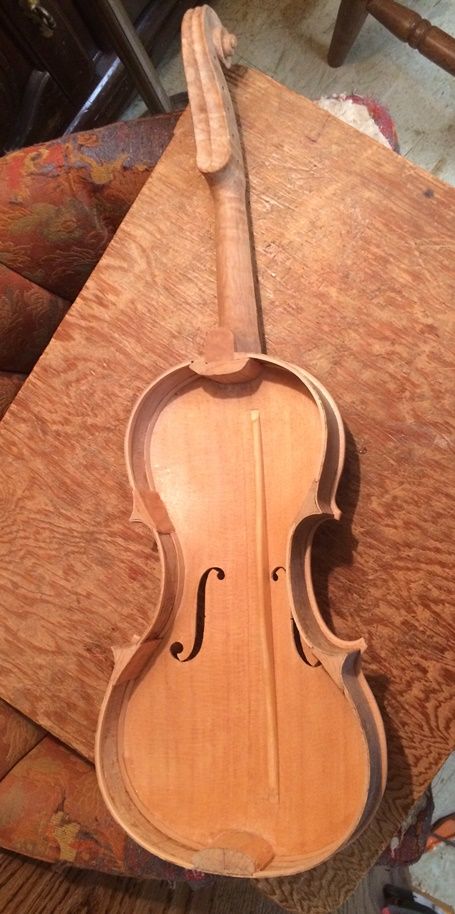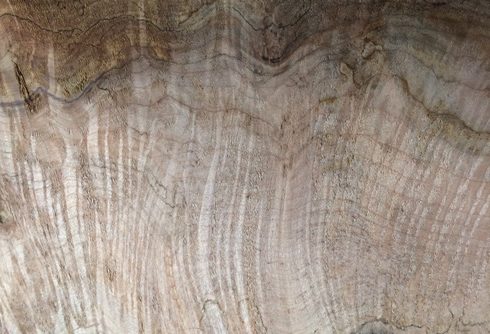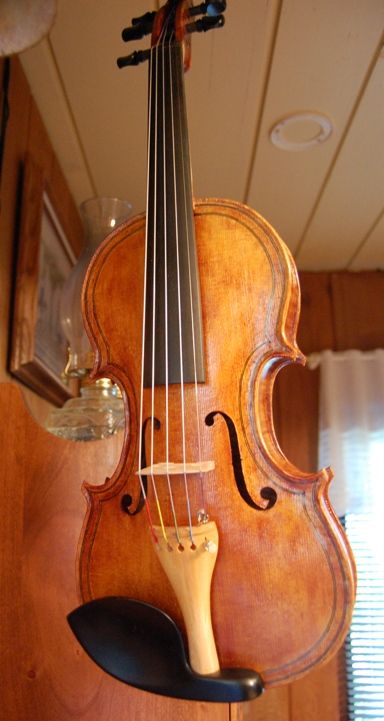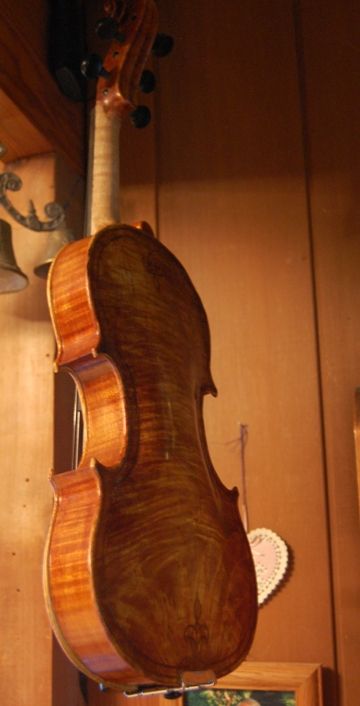Five-string fiddle Inside Complete
Before I could prepare the back plate of this five-string fiddle, I had to complete the rest of the corpus (body of the violin:) First, the inside willow blocks and willow linings had to be tapered and shaped so they are completely smooth. Then, the back of the entire corpus (including the heel of the neck) has to be leveled, so that it will lie flat on the back plate. So, here is the main part of the 5-string violin, with the interior clean and smooth, and the back leveled and flat:

Beginning the Back Plate
I clamped the corpus flat on the back plate billet, then traced around the ribs, using a small washer to establish the correct rib overhang. Then I corrected the corners, using a straightedge and a series of circle patterns. Finally, I cut out the plate “footprint”, and began the arching process. Oregon Big Leaf Maple is a relatively soft maple, but it is still a good deal harder and tougher than Sitka spruce, so the back plate is a lot more work to carve. Here is the beginning:

In the above photo, the back plate is sitting in a work cradle, so that it will stay in place while I carve it. The Ibex plane in the photo has been slightly modified, to add the palm-fitting handle. This reduces the stress on my fingers and transfers the force to the palm of my hand as opposed to my thumb and forefinger. (To Ibex plane-owners: you will observe that I have removed the adjusting screw and reinstalled it upside down to allow insertion of the maple handle.)
I have been on vacation for two weeks, which has allowed me to accomplish more work than usual, in a shorter period of time. I go back to my regular job, on Monday, though, so things are about to slow to a crawl. (Sorry…that’s life. :-))
Thanks for looking.





